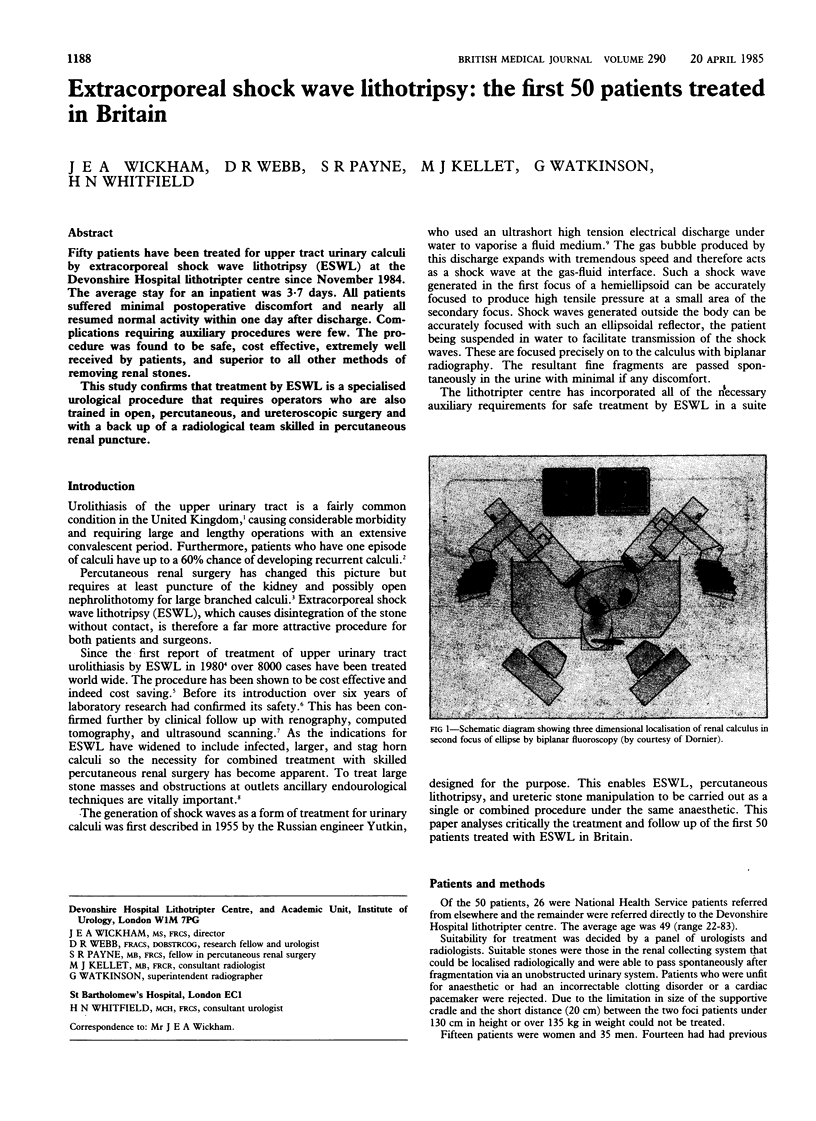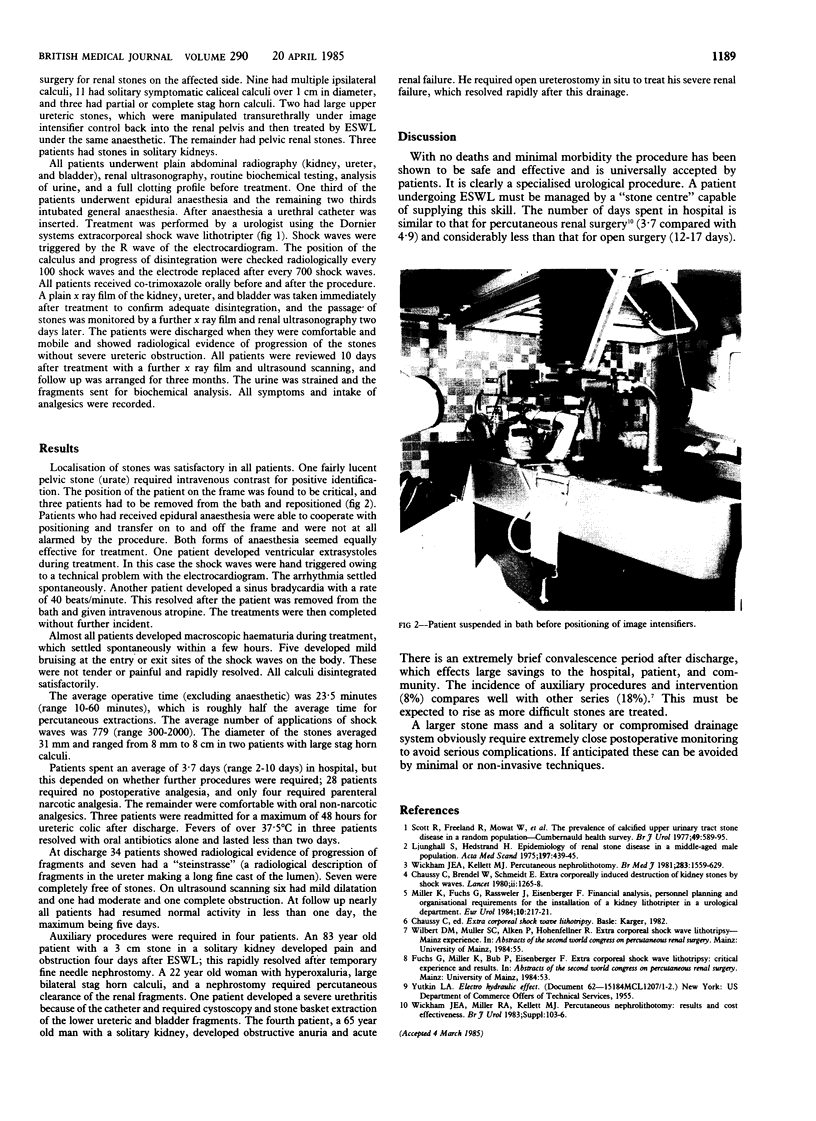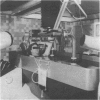Abstract
Fifty patients have been treated for upper tract urinary calculi by extracorporeal shock wave lithotripsy (ESWL) at the Devonshire Hospital lithotripter centre since November 1984. The average stay for an inpatient was 3 X 7 days. All patients suffered minimal postoperative discomfort and nearly all resumed normal activity within one day after discharge. Complications requiring auxiliary procedures were few. The procedure was found to be safe, cost effective, extremely well received by patients, and superior to all other methods of removing renal stones. This study confirms that treatment by ESWL is a specialised urological procedure that requires operators who are also trained in open, percutaneous, and ureteroscopic surgery and with a back up of a radiological team skilled in percutaneous renal puncture.
Full text
PDF

Images in this article
Selected References
These references are in PubMed. This may not be the complete list of references from this article.
- Chaussy C., Brendel W., Schmiedt E. Extracorporeally induced destruction of kidney stones by shock waves. Lancet. 1980 Dec 13;2(8207):1265–1268. doi: 10.1016/s0140-6736(80)92335-1. [DOI] [PubMed] [Google Scholar]
- Ljunghall S., Hedstrand H. Epidemiology of renal stones in a middle-aged male population. Acta Med Scand. 1975 Jun;197(6):439–445. doi: 10.1111/j.0954-6820.1975.tb04948.x. [DOI] [PubMed] [Google Scholar]
- Miller K., Fuchs G., Rassweiler J., Eisenberger F. Financial analysis, personnel planning and organizational requirements for the installation of a kidney lithotripter in a urologic department. Eur Urol. 1984;10(4):217–221. doi: 10.1159/000463795. [DOI] [PubMed] [Google Scholar]
- Scott R., Freeland R., Mowat W., Gardiner M., Hawthorne V., Marshall R. M., Ives J. G. The prevalence of calcified upper urinary tract stone disease in a random population--Cumbernauld Health Survey. Br J Urol. 1977;49(7):589–595. doi: 10.1111/j.1464-410x.1977.tb04536.x. [DOI] [PubMed] [Google Scholar]




